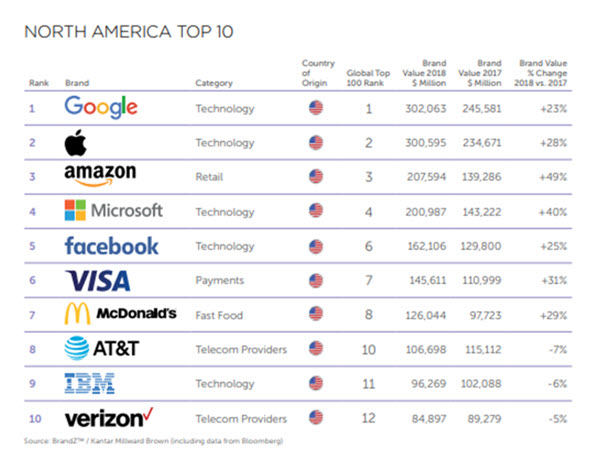
Upfluence offers a SaaS platform which helps brands, agencies, as well as businesses with content management and marketing. It provides a vast database of influencers as well as powerful search and analysis capabilities. Users can manage multiple campaigns from one, cloud-based platform. The software allows users to track and analyze results, make payments on influencers, and even track their performance.
Upfluence helps you identify, communicate with, and engage with the most influential customers in your niche. The power of the network allows you to run multiple campaigns and reach your marketing goals quicker. Upfluence helps you to find the right influencers for your campaign. Upfluence also offers powerful analytics which can help you measure the impact on your influencer efforts.
Upfluence's search engine is intuitive and user-friendly. By entering keywords, social media platform, and location you can narrow down your search to influencers. You can see the results in almost real time. The listing also contains detailed bios and social media engagement statistics for each of the influencers. This data can also be exported for offline usage.

Upfluence has three subscription plans available: Enterprise, Scale and Starter. Each plan is tailored to a particular business size. A dedicated account manager will be assigned to you and you will have access white-labeled services. Your contract usually lasts 12 months. But, you can customize it to fit your needs.
Upfluence makes a great choice if you are an e-commerce or direct-to consumers brand looking to increase sales with influencer marketing. It has an extensive influencer database that covers every major social networking and video platform. It also includes an automated payment management system and a dashboard for managing influencer relationships.
Upfluence recently doubled its eCommerce focus, providing a wide range of integrations for eCommerce platforms including Amazon, Google Shopping, and Shopify. A Chrome Extension is also available for free. The extension allows you to see a list with recent posts from influencers, as well as the title and social media followers.
You can also use the platform to create email templates and bulk email messages, as well as Live Capture. To streamline your workflows, you can integrate with your favorite CRM, marketing, and ecommerce tools. Lastly, Upfluence also provides a white-label ambassador sign-up page, allowing you to create a personalized landing page that will allow your potential influencers to apply to partner with you.

Although Upfluence can be expensive, it delivers incredible value. It is user-friendly, easy to use, and provides a variety of content and marketing tools. Upfluence offers everything you need to manage your influencer marketing campaigns, including social listening and ad campaign management.
Scale plans are suitable for small or medium-sized businesses. This package includes a minimum 12-month agreement and premium support. Upgrade to the Enterprise Plan to get more influencers, more features and more options.
FAQ
What are the basics of print advertising?
Print advertising is an effective way to reach consumers. Many companies use print advertising to promote their products. The key objective is to capture the attention of the consumer.
Print ads are usually short (one page) and contain text, pictures, logos, and other graphics. These ads may include sound, animation and video as well as hyperlinks.
The following categories are the most common types of print advertisements:
1. Brochures: These large-format printed pieces are meant to draw customers into stores. Brochures often feature eye-catching designs and colorful photos.
2. Catalogues- These are smaller versions and variants of brochures. These are typically sent to customers who ask for specific information.
3. Flyers – These are small pieces made of paper that are distributed at events, such as fairs or concerts. If they are given out at retail outlets, they can be obtained for free, but you must pay for them.
4. Posters - These are larger versions of flyers. These flyers can be displayed on buildings, fences and walls. They are usually created using computer software programs designed to catch passersby's attention.
5. Direct mail - This refers to letters or postcards mailed directly to potential customers. These cards are sent by companies periodically to remind their customers about their company.
6. Newspaper Ads - These are placed in newspapers and magazines. They can be quite lengthy and often include text as well as images.
What is advertising's main purpose?
Advertising is not just about selling products; it's also about creating an emotional connection between you and your customers.
Advertising is about communicating ideas and values to people who are already interested in what you have to offer. It's about changing people's attitudes. It's all about building relationships.
It's all about helping people feel good.
But, if you don’t have a clear understanding of your customers’ needs, you will not be able sell anything.
So before you start any advertising project, you should first understand your customer's needs and wants, and buying habits.
You can then design ads that resonate with them.
How can I choose my target audience
Start with yourself, and the people closest to you. Do you not know where to start? Ask yourself "Whom do I want to reach?"
Ask yourself these questions. Who are the most influential people within my industry? What are their daily problems? Who are my top-ranking people? Where do they hang out online?
Return to the beginning. Why did your start? What was your problem and how did it solve?
These answers will help you identify who your ideal clients are. You'll also learn more about what makes them tick and why they buy from you.
For clues on who your competitors cater to, check out their websites and social media pages.
Once you have identified your target customer, you need to decide the best channel to reach them. An example: If you provide services to realty agents, you may create an informational website for home buyers.
A blog could be created if your software is offered to small businesses.
A Facebook page for teens could be set up if you are a clothing seller. A Twitter account could be set up by restaurant owners to allow parents to search for places that are kid-friendly.
The important thing is that you have many options for getting your message across.
What is affiliate marketing?
Affiliate marketing can be described as an online business model. You earn commissions by referring customers who purchase products and/or services on other websites. When someone purchases from you, the product owner will pay you.
Affiliate marketing is built on referrals. To get people to buy from your affiliate marketing, you don't have any special requirements. All you need to do is refer them to the website.
You don't have to sell anything. It's just as easy to sell as it is to buy.
An affiliate account can be created in minutes.
Referring as many people as possible will increase your commission.
There are two types affiliates.
-
Affiliates who have their website owned by them
-
Affiliates who work with companies that provide products and/or services.
Radio advertising: What are your options?
It is important to understand the interdependence of different media types. Remember that all media types are complementary, not competing.
Radio is best used as an extension of television advertising. It enhances television by reinforcing important messages and providing additional details.
For radio listeners, TV commercials can often be too long. Radio ads are usually shorter and less expensive.
Social media is a great way to advertise your business.
Social Media Marketing (SMM) allows you to reach customers where they are - on social networks such as Facebook, Twitter, LinkedIn, YouTube, Google+, etc. These networks can be targeted with keywords.
This advertising method is cost-effective because it costs less to market online than traditional methods. It also allows you to build strong relationships with your current and potential clients.
It's easy to start using social media to promote your business. You only need a smartphone or computer and internet access.
What is an advert buyer?
An advertiser purchases advertising space on TV, radio or print media.
An advertiser pays for the time they want their message to appear.
They don't necessarily look for the best advertisement, but instead seek out the most effective way to reach their target market.
Advertisers might have certain demographic information about potential customers. This could include age, gender income level, marital status and occupation as well as hobbies, interests, and so on.
This information can be used by advertisers to decide which media works best for them. For example, they might decide that direct mail would be more effective with older audiences.
Advertisers also check out the competition. Advertisers may choose to place ads near competitors if there are similar businesses in the area.
Advertisers should also consider the budget they have and how long they plan to spend it before it expires.
Statistics
- Worldwide spending on advertising in 2015 amounted to an estimated US$529.43 billion. (en.wikipedia.org)
- This means that at least 50% of an ad needs to be shown on the screen for at least one second. (quicksprout.com)
- Nonetheless, advertising spending as a share of GDP was slightly lower – about 2.4 percent. (en.wikipedia.org)
- In 1919 it was 2.5 percent of gross domestic product (GDP) in the US, and it averaged 2.2 percent of GDP between then and at least 2007, though it may have declined dramatically since the Great Recession. (en.wikipedia.org)
External Links
How To
How do I advertise with Google?
AdWords is Google's advertising platform where businesses can buy ads based on keywords they want to target. Set up your account first. Select a campaign name and set the budget. Choose the ad type (text or image), and add keywords. You then place your bids on these keywords. Clicking on an advertisement will only result in you being paid if the click is from someone who searched one of your targeted keyword phrases. This way, you get paid even when people don't buy anything.
Google has many tools available to make sure your ads are effective. These tools include Ads Preferences Manager Manager and Keyword Planner. These let you determine which strategy is best for you business.
A keyword planner can help you identify the right keywords for your campaigns. It also shows you how much competition there is for certain keywords, helping you decide whether or not to spend money bidding on them.
Ads Preferences Manager allows you to modify settings like the maximum number impressions per day, and the minimum cost of each click.
Analytics allows you to monitor the performance and compare your ads to other competitors. Reports can be viewed that compare your ads to others.